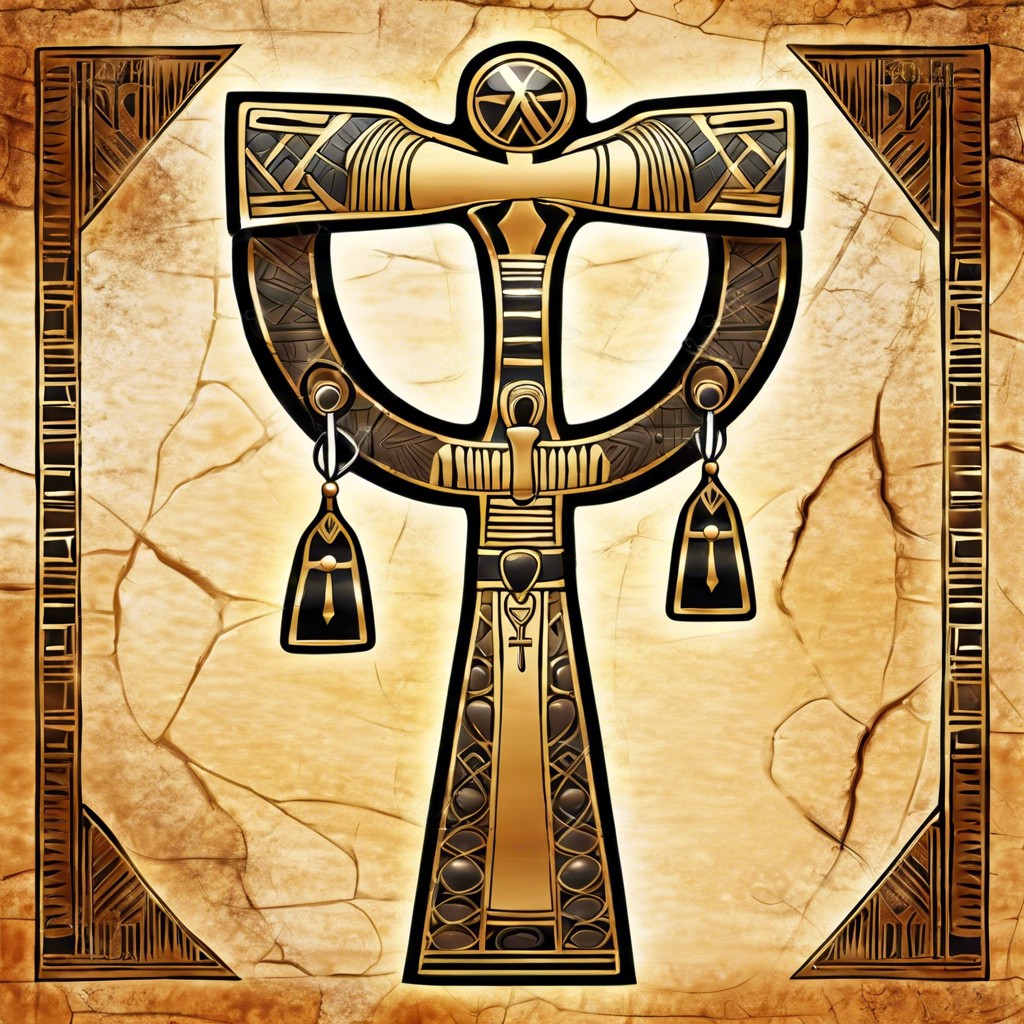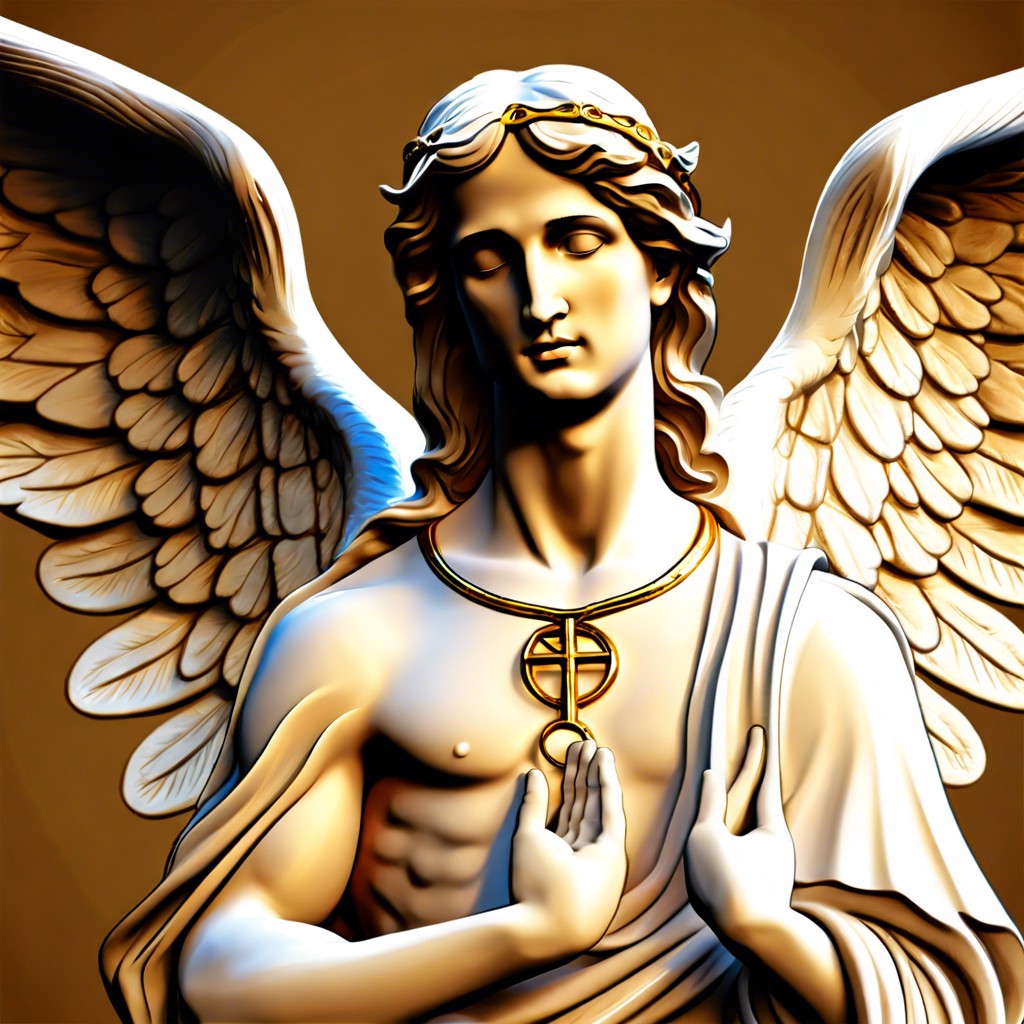Discover the spiritual meaning and symbolic significance of the ancient Egyptian ankh.
Unlock the mysteries of the ankh, a symbol steeped in profound history and meaning. Originating in ancient Egypt, this emblem intertwines with the divine and the concept of eternal life. Explore its captivating presence in mythology, religious practices, and its modern-day interpretations and uses, as well as its artistic representations and lasting cultural impact. Join a journey through the rich tapestry of the ankh’s legacy.
Key takeaways:
- Ankh symbolizes life, immortality with divine connection.
- Held by gods, tied to eternal existence in afterlife.
- Ankh signifies life, immortality in Egyptian myths, rituals.
- Ankh seen in fashion, pop culture, and spiritual practices.
- Ankh’s cultural impact spans ancient to modern artistic expressions.
Symbolism and Origin in Ancient Egypt

The ankh, a symbol resembling a cross with a loop at the top, was a powerful emblem in ancient Egypt. It is often depicted in the hands of gods and pharaohs, symbolizing life and immortality.
This hieroglyphic sign conveys the concept of eternal life and the divine spark. The loop signifies the eternal soul, while the crossbar represents the material plane.
Central to Egyptian belief was the idea of a life beyond the grave. The ankh was closely linked to the afterlife, depicting the gods granting life to the deceased.
Ankh amulets were common, offering protection and promoting health and strength. Often seen in tomb paintings and carvings, it underscored the significance of the life-death-rebirth cycle.
Overall, the ankh was more than just a symbol. It was a bridge between the human and the divine, embodying the promise of eternity.
Connection to the Gods and Eternal Life
In Ancient Egyptian culture, the ankh is closely tied to the gods. Many deities, including Ra and Isis, are often depicted holding or wearing the symbol. This connection suggests a divine bestowal of life.
The ankh also appears frequently in tombs and temples, indicating its role in the afterlife. It embodies the concept of eternal existence. Egyptians believed that life continued after death, and the ankh served as a key to this eternal realm.
The circular loop of the ankh symbolizes the sun rising on the horizon, a daily renewal of life. This aligns it with the cycle of life, death, and rebirth. Through the ankh, the gods granted the promise of immortality to those who followed them.
Overall, these elements highlight the ankh’s profound significance in Ancient Egyptian spirituality. It wasn’t just a symbol; it was a beacon of eternal hope.
Use in Mythology and Religious Practices
In many ancient Egyptian myths, the ankh is frequently seen in the hands of gods and goddesses. It signifies their power to grant life and immortality. Osiris and Isis often hold the ankh to showcase their life-giving abilities and eternal presence.
During religious ceremonies, priests would carry the ankh, invoking divine blessings and protection. It was also prominently featured in temple rituals to symbolize the transfer of life from gods to humans.
Pharaohs were often depicted with the ankh in tomb carvings and funerary art. This was to ensure their safe passage and eternal life in the afterlife. The ankh served as a bridge between the mortal world and the divine, representing the promise of an everlasting existence.
Modern Interpretations and Uses
Today, the ankh symbol has found its way into contemporary spiritual and cultural circles in various fascinating ways.
In the realm of fashion, it frequently appears in jewelry and clothing as an emblem of life and spiritual consciousness. Many people feel a connection to its ancient roots and choose to wear it as a statement piece.
Pop culture has embraced the ankh too. It often features in movies, literature, and art that explore themes of immortality and mystery. This usage highlights its timeless appeal and powerful visuals.
In holistic and new age spiritual practices, the ankh is sometimes used in meditation and energy healing. Practitioners believe it can help channel life force energy, promoting health and well-being.
Tattoos featuring the ankh are also popular. Individuals often choose this design to symbolize their personal journey toward understanding deeper truths about life and existence.
So, whether it’s through aesthetics or spirituality, the ankh continues to resonate, bridging ancient wisdom with modern sensibilities.
Artistic Representations and Cultural Impact
Ancient Egyptian art often features the ankh prominently, reflecting its importance in their culture. Pharaohs were frequently depicted holding the ankh, symbolizing their divine right to rule and connection to the gods. These representations were not just ornamental but imbued with deep spiritual significance.
In modern times, the ankh has permeated various cultural expressions. It appears in jewelry, tattoos, and fashion, symbolizing life and spirituality. Artists and designers utilize the ankh to convey themes of eternal life and interconnectedness. Its universal appeal stems from its simple, yet powerful design that resonates across cultures and time periods.





